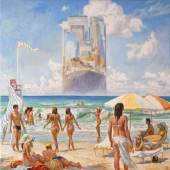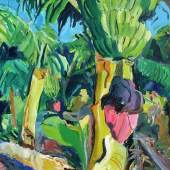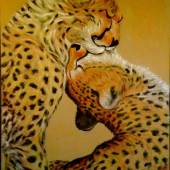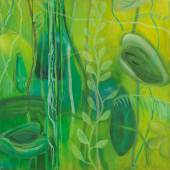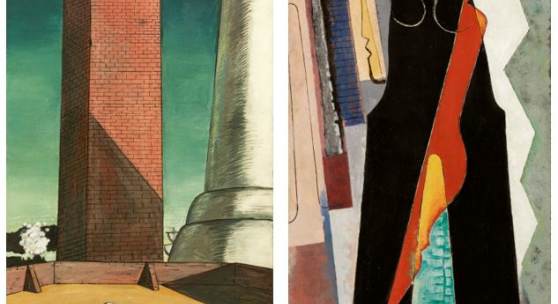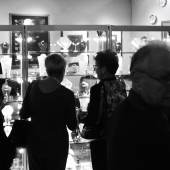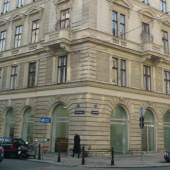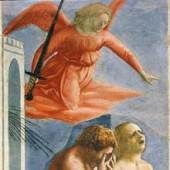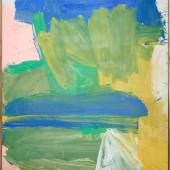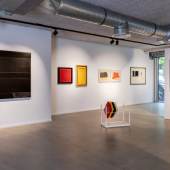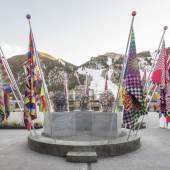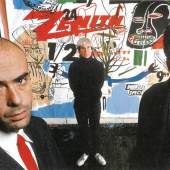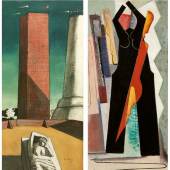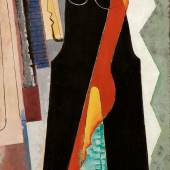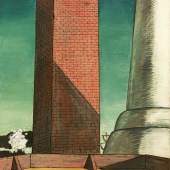Two Monumental Masterworks by Giorgio de Chirico and Man Ray
-
Auktion28.10.2020
Sotheby’s October Evening sales will be presented in the dynamic, innovative digital format pioneered during our marquee summer auctions in June and July. The sales will be broadcast globally from the New York salesroom to enable viewers to follow the bidding live, in high-definition through real-time video streams, while bidders will be able to place bids with Sotheby’s specialists in New York, Hong Kong and London via phone, or via Sotheby’s interactive online bidding platform.
Sotheby’s will hold its Day Sales of Contemporary and Impressionist & Modern Art in mid-November, and will present additional marquee sales of Contemporary and Impressionist & Modern Art in New York in early December.
Making their auction debut in the October Evening, Il Pomeriggio di Arianna (Ariadne's Afternoon) and Black Widow (Nativity) will be exhibited alongside works from our marquee October Evening Sale in Sotheby’s New York galleries beginning 21 October, open by appointment only. GIORGIO DE CHIRICO’S IL POMERIGGIO DI ARIANNA (ARIADNE’S AFTERNOON) AND MAN RAY’S BLACK WIDOW (NATIVITY)
Drawing inspiration from his surroundings in Greece as a child, Giorgio de Chirico focused on the antique sculptural figure of Ariadne in his earliest known series—first denoted as the Ariadne series by curator and art historian James Thrall Soby. Executed between 1912 and 1913, the series is comprised of eight canvases—including Il Pomeriggio di Arianna (Ariadne's Afternoon)—with most of these works centering around eerily quiet piazzas that are illuminated with a dreamlike light and intersected by long, sharp-edged shadows.
The focal point of each painting is a sculpture of Ariadne—the Cretan princess who married hero Theseus, and later Dionysus, god of wine and fertility—depicted from various angles, as de Chirico tested the limits of presenting multiple perspectives within one painting, while simultaneously creating a cohesive composition. In Il Pomeriggio di Arianna (Ariadne’s Afternoon), the exaggerated verticality of the painting tips the sculpture forward into the foremost pictorial plane, confronting the viewer. In each of the eight canvases that comprise the series, Ariadne is placed in different versions of an ambiguous piazza, while towers and trains rise behind her, arcades flank her, small figures appear in the distance as flags wave in the wind. Only two of these works—the present painting and Ariadne from 1913, in the collection of The Metropolitan Museum of Art—also depict an emblematic ship, Theseus sailing away from the island in the former, while Dionysus arrives on a steam train in the latter.
Working in this carefully delineated and representational manner, de Chirico created works in stark contrast with the prevailing Cubo-Futurist style of his contemporaries. While conjuring the Renaissance ideals of human form and perspective—and elevating the importance of figuration—in his Ariadne series, the artist emerged as the founder of a new style: the metaphysical – a term first given to de Chirico’s paintings in 1914 by the French poet Guillaume Apollinaire and refers to the enigmatic quality of his urban landscapes. At its core reflecting a world of enigma and uncertainty, the metaphysical laid the foundation for not only the Surrealist iconography, which flourished in the following decade, but also the Modernist identity that revolutionized the history of art.
In 1913, Abstract Art arrived stateside via the famed Armory Show, and Man Ray, like many American artists, seized upon what he saw within the galleries for inspiration. Stimulated by the show, he pursued his interest in Modern Abstraction, as well as experimentation with scale and flatness.
Key to developing his stylistic trajectory toward the flat picture plane was Man Ray’s exploration of translucency and overlap, which primarily evolved out of his professional and personal background. The artist worked for several years for a map-and-atlas publisher in New York, where translucent gels were used to indicate changes in color, which resonates in Black Widow (Nativity) across the black figure in particular. Man Ray was also influenced by his father’s profession as a tailor; his family home in Brooklyn, New York, was filled with fabric samples and patterns. This influence is evident in the present work, with many of the shapes appearing as shirt forms or fabric swatches.
By emphasizing the flatness of the composition through translucency and overlap in his early paintings, Ray also considered the prospect of working on a large scale. Following the 1913 Armory show, the artist said, “It gave me the courage to tackle larger canvases” with Black Widow (Nativity) being the largest canvas he painted in 1915. Foreshadowing the Abstract Expressionists, Man Ray understood that large canvases defied the conventions of easel painting, and indeed—in concert with highlighting the flatness of the picture plane—created limitless possibilities, of which the present work is at the forefront.
In addition to their remarkable significance within the respective artists’ oeuvre, these two sensational works share numerous symbolic qualities, or totems: from their subject matter and their large-scale format, to their incredible rarity and quality.
While de Chirico’s use of Greek mythology harkens to his familial home in Greece, Man Ray’s iteration of shirt patterns and fabric swatches indicates his father’s occupation as a tailor. The works are imbued with familial symbols, which served as the inspiration for their groundbreaking compositions.
-
05.10.2019 - 13.10.2019Am 5. Oktober rollt die FAIR FOR ART Vienna der Kunst zum dritten Mal den roten Teppich aus. Mehr...
-
Gegründet 1977 setzen wir uns intensiv mit zeitgenössischer Kunst - besonders Malerei und...
-
Masaccio begründet mit seinem Trinitätsfresko "Die Heilige Dreifaltigkeit"...
-
16.04.2024 - 15.09.2024Two stays in Italy inspired Willem de Kooning to bold experiments in his art, a new exhibition in...
-
17.04.2024 - 17.05.2024Marking 50 years of Sotheby's in the Belgian capital, an esoteric selling exhibition is on...
-
20.04.2024 - 24.11.2024Jeffrey Gibson on Representing the United States and Himself By Melissa Smith | Feb 16, 2024 From...
-
13.05.2024 - 15.05.2024Sotheby’s Sealed is thrilled to present this spectacular Mercedes-Benz 300 SL Alloy...
-
14.05.2024Warhol & Basquiat’s Collaboration Series Masterwork To Highlight Sotheby’s...
-
28.10.2020Auktion »
.
